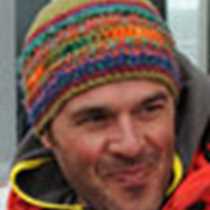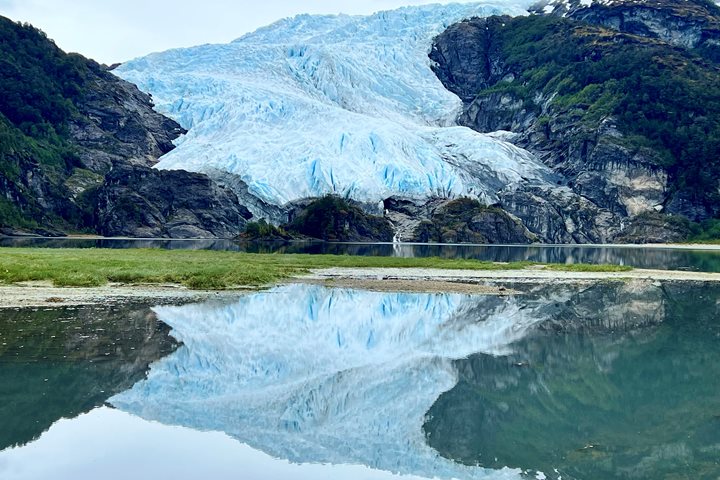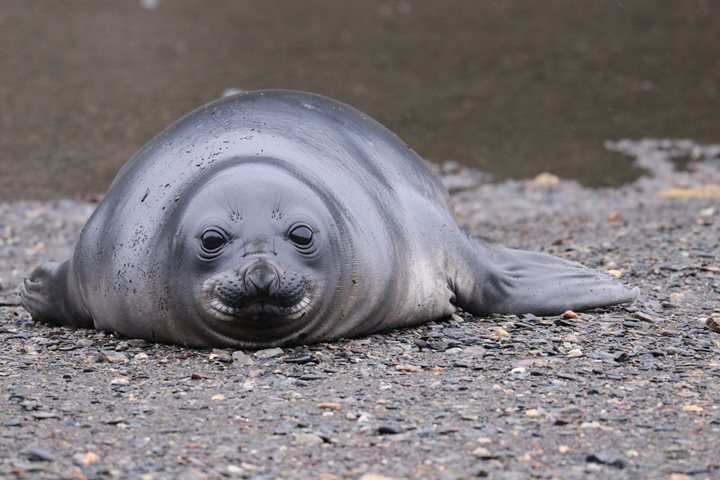If there is something that you can be sure of in Patagonia it is that the weather changes often. Locals say that if you don’t like a particular type, you only have to wait five minutes. That was the case early this morning, in the afternoon and, well, in the evening too…
Early on we had fierce winds gusting up to 30 knots but after a turn around a headland, the next leg of the fjord was flat calm and with not even a ripple in the water. Another turn and the sun was coming out of the heavy clouds and washing over the little town of Tortel, our destination for the morning.
Glacier fed rivers gave the fjord their particular coloration, adding to the beauty of the scene. Soon we had boats on the water and were making our way to the great system of boardwalks that connects the houses and publics spaces of this charming town of 507 inhabitants. Some made the mistake of trusting the sun was going to last and quickly had to run back for their rain gear (never, ever, leave without it in southern Chile!). Rain is part of the daily life here and you could see the locals going on with their different activities without even a blink. Despite the low population Tortel area expands some 19.938 km sq. (That is almost 40 km sq. or 24 sq. miles per person!), covering a considerable area of wilderness that has recently been protected from one of the main threats that affects the Chilean fjords, salmon farming. The community, with the support of the Chilean NGO Oceana, has decided to remain sustainable in their practices and ban these types of projects that harm the environment. This is not an out of the blue decision but something very much in line with the way of thinking of the community, which also fiercely opposes to major damming projects on the nearby Baker River, one of the most powerful untamed rivers in Chile.
Around midday we returned to National Geographic Explorer to continue south, sailing the remarkable Baker and Messier Channels. Vertical granite walls, some covered in dense forest and some totally naked, showing the tremendous power of the glaciers that until not so long covered this area, flanked our sides. In the water thousands of seabirds, mostly sooty shearwaters where making a meal of some dense concentrations of krill and other invertebrates. The afternoon went by delightfully, enjoying the scenery and some informative lectures by the staff. At the end of the day, the weather once again changed, right in time, to give us magical light over the English Narrows.







